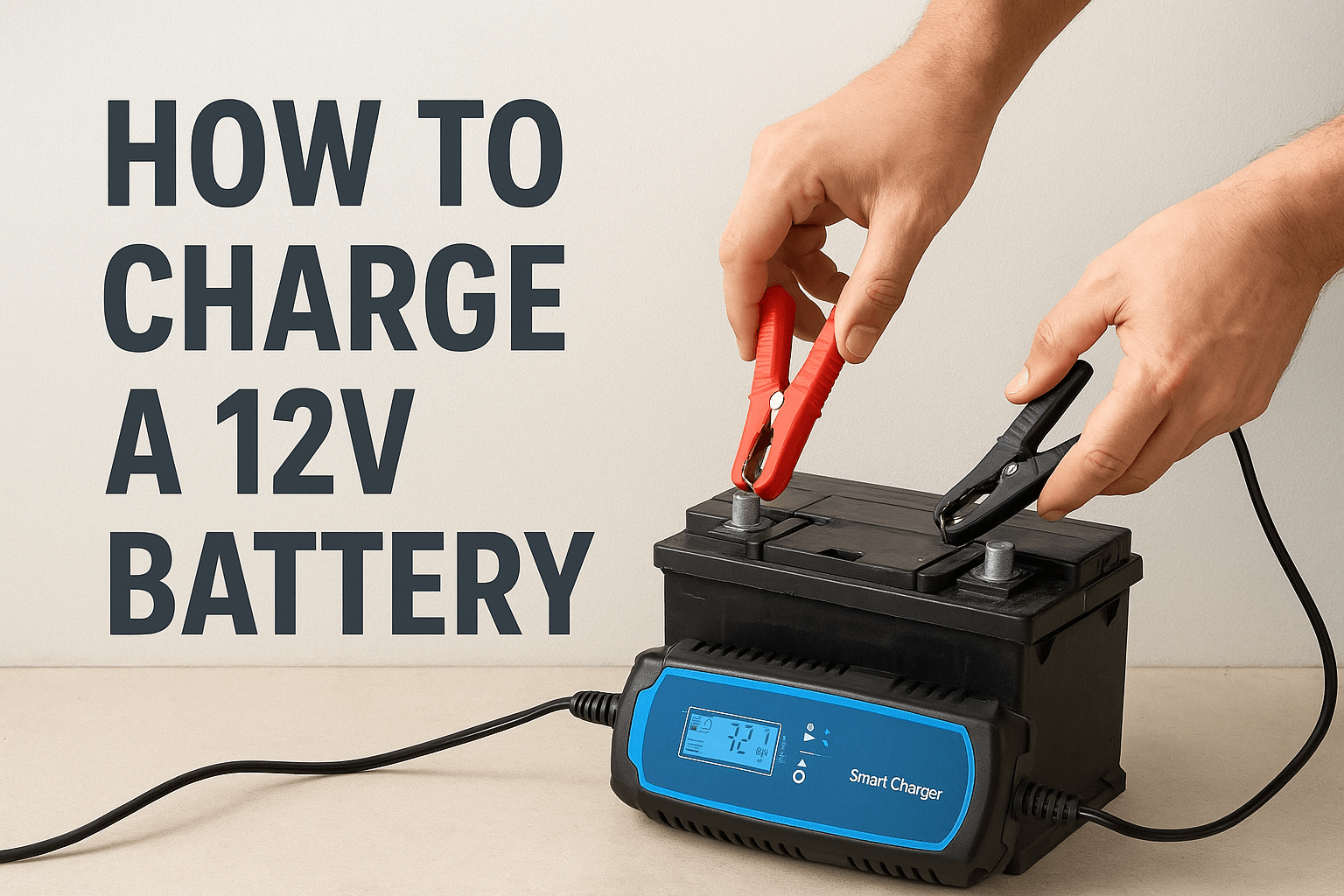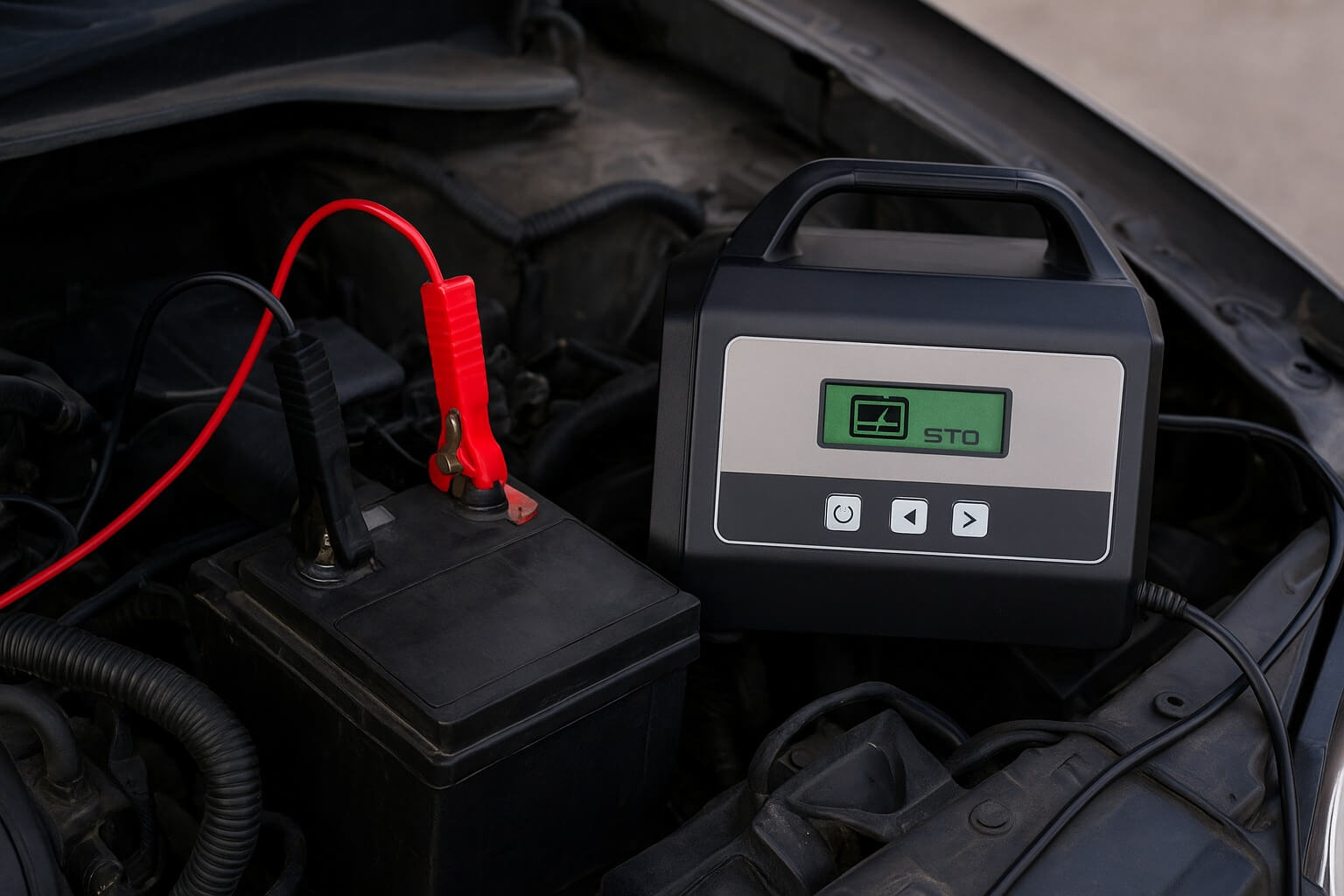When buying a new battery for your car, 4WD, boat, or caravan, you’ll likely see warranty information included — but what does it actually mean? Many assume a battery warranty guarantees an instant replacement if the battery fails. In reality, battery warranties in Australia are more detailed and require proper procedures, testing, and an understanding of what is and isn’t covered.
In this guide, we break down how battery warranties work, what falls under a valid warranty claim, what doesn’t, and what to expect if your battery shows signs of trouble. Whether you’re a first-time buyer or simply want to understand your consumer rights, this article will help you make informed decisions and avoid common warranty misconceptions.
What Is a Battery Warranty?
A battery warranty is a guarantee provided by the manufacturer that the battery is free from defects in materials or workmanship under normal use for a specified period. If a battery fails within that period due to a manufacturing fault, the warranty allows for a replacement — not a refund — provided certain conditions are met.
It’s important to note that the warranty isn’t a blanket replacement promise. The process includes testing, proper diagnosis, and assessing how the battery was used. If the issue stems from incorrect usage, installation, or external damage, it won’t be covered/replaced.
What’s Covered Under a Battery Warranty?
Battery warranties in Australia typically cover defects that arise due to:
- Manufacturing faults in the battery’s construction
- Material defects causing premature failure
- Issues with internal components under normal usage
- Batteries not performing within expected standards under appropriate conditions
In practical terms, this might include batteries that fail to hold charge well within the warranty period, or ones that stop working without being subjected to misuse or improper conditions.
At Batteries Sunshine Coast, warranty claims follow manufacturer guidelines and undergo a testing process to ensure a fault is truly covered under warranty conditions.
What’s Not Covered Under Warranty?
Battery failures due to misuse, improper installation, physical damage, or negligence are not covered. This is where confusion often arises, so let’s break it down clearly.
Warranties do not cover:
- Physical damage (dropping the battery, terminal damage, casing damage etc.)
- Overcharging or undercharging (e.g. If a battery is charged in excess of 15v or undercharged/discharged under 11.8v this will void any Australian Warranty)
- Using starter batteries in deep cycle applications (e.g. car audio systems, fridges, trolling motors)
- Incorrect installation or lack of proper maintenance (in the case of maintainable batteries)
- Excessive vibration (e.g. in construction or motorsport use)
- Sulphation or repeated deep discharge from lack of charging or a drain from the vehicle/application.
- Using incompatible battery management systems
- Mixing battery ages and brands in a multi-battery setup
These exclusions exist because such conditions fall outside what’s considered ‘normal use’ and typically indicate an issue with the application or setup, not a fault in the battery itself.
Featured: A Complete Guide to Mobile Car Battery Replacement
Understanding Warranty Procedures in Australia
Many customers assume that if their battery isn’t working, they can simply bring it back and receive a replacement on the spot. However, battery warranties involve specific steps before a replacement can be approved.
Here’s how it typically works at Batteries Sunshine Coast:
1. Bring the Battery in for Testing
You’ll need to return the battery to our store in Chevallum for assessment. Warranty testing cannot be performed roadside, although call-out services are available for a fee. We’re open Monday to Saturday, and there’s no extra cost for Saturday service.
2. Proof of Purchase Required
A dated receipt is needed to validate the warranty claim. If you’ve lost the receipt, a bank statement or store record may be acceptable, but discretion applies.
3. Testing Process
Before any battery is deemed faulty, it goes through a series of diagnostic tests using Australian approved methods — typically we need to charge the battery first then use a carbon pile load test and full electronic discharge test. Electronic handheld testers are not sufficient on their own.
4. Charging Before Testing
If the battery is undercharged, it will need to be fully charged before testing can begin. A flat battery is not necessarily a faulty battery — it may have simply not been charged properly.
5. Manufacturer Assessment (If Needed)
In some cases, batteries may be sent to the manufacturer or a repair agent to determine the nature of the problem, especially if it’s a complex issue.
6. Outcome of the Warranty Claim
If the battery is found to have a manufacturing fault, it will be replaced with the same or equivalent model. There are no refunds — only a like-for-like battery exchange in accordance with manufacturer and Australian Consumer Law policies.
What Happens If It’s Not a Warranty Issue?
If testing reveals the battery failed due to improper use or any of the excluded reasons mentioned earlier, it won’t be covered under warranty. In these cases, you may be advised on proper usage or setup to prevent similar issues in future.
Warranties & Australian Consumer Law
Australian Consumer Law (ACL) provides protection that cannot be excluded by any retailer or manufacturer. Under ACL, consumers are entitled to remedies such as repair, replacement, or refund if a product:
- Is faulty
- Is not of acceptable quality
- Is unsafe
- Doesn’t match its description or advertised features
However, this does not apply if:
- You’ve simply changed your mind
- You found a cheaper option elsewhere
- The product was damaged after purchase
- The fault resulted from misuse or incorrect installation
In short, warranties work alongside Australian Consumer Law — they Don’t override it.
What You Need to Know Before Claiming a Battery Warranty?
To help your claim go smoothly, keep these tips in mind:
- Keep your receipt or proof of purchase in a safe place
- Charge and maintain your battery properly
- Use the battery as per its intended purpose
- Follow manufacturer guidelines on charging systems and installation
- Bring the battery in for testing as soon as possible if issues arise
Don’t assume the battery is faulty because your car won’t start. Modern vehicles have many electrical systems, and starting issues could be caused by alternators, starter motors, wiring, parasitic drains, or faulty control modules — not just the battery.
Why This Matters to Our Customers?
At Batteries Sunshine Coast, we stand behind the products we sell and offer full support during the warranty process. Our team will assist you in identifying whether your issue is potentially covered, and guide you through the correct steps to lodge a claim.
Because we follow manufacturer guidelines and national warranty standards, we ensure that every battery is assessed fairly and accurately.
If you’re unsure whether your battery issue is warranty-related, we recommend getting in touch or visiting our Chevallum store. We’ll perform the required tests and advise you on the next steps.
Useful: How To Charge A Car Battery
Final Thoughts
Battery warranties in Australia are designed to protect consumers against genuine manufacturing defects — but they don’t cover everything. Understanding what’s included, what isn’t, and how the process works can help you avoid disappointment and unnecessary delays.
At Batteries Sunshine Coast, we’re committed to transparency, honest advice, and helping you get the most from your battery purchase. If you need help with a claim, a replacement, or just advice on battery care, don’t hesitate to contact us.
FAQs
1. What is included in the battery warranty?
A battery warranty typically covers faults caused by defects in materials or manufacturing. If the battery fails under normal use conditions due to an internal fault — such as a factory defect — it may be eligible for replacement under warranty. This does not include a refund but a like-for-like battery replacement, pending testing and confirmation of the fault.
2. What is not included in the battery warranty?
The battery warranty does not cover issues arising from misuse, neglect, physical damage, overcharging, incorrect installation, or using the battery outside of its intended purpose. Things like sulphation, wear and tear, use in motorsport, or failing to maintain wet-cell batteries correctly are also excluded. In short, if the battery fails due to anything other than a genuine manufacturing fault, it’s not covered.
3. How do I know if my battery is covered under warranty?
To check if your battery is still under warranty, refer to your original purchase receipt for the warranty period, which begins from the date of purchase. You’ll also need to bring the battery to our battery store for proper testing. If the issue is deemed a manufacturing fault (not caused by misuse, damage, or incorrect application), it may be covered. Keep in mind, commercial use batteries may have different warranty terms.
4. What’s the first step if I think my battery is faulty?
If you believe your battery may be faulty, the first step is to bring it to our Chevallum store for a proper assessment. We’ll conduct a series of tests — including charging and load testing — to determine whether the issue is due to a manufacturing fault. Warranty decisions are only made after confirming the battery meets the necessary conditions for a valid claim.
5. Can I get an instant replacement for my faulty battery?
No, batteries are not replaced on the spot. All suspected faulty batteries must go through a testing process to confirm whether a warranty applies. This includes charging, load testing, and other diagnostic checks. If the battery is confirmed to be defective due to a manufacturing fault, we’ll provide a like-for-like replacement — not a refund — in line with standard Australian warranty procedures.
6. Is a flat battery automatically covered under warranty?
Not necessarily. A flat battery is usually caused by undercharging/discharging, misuse, or being left unused for extended periods — which are not covered under warranty. If your battery is flat, it must be properly recharged first. Once fully charged, we’ll conduct testing to see if the battery has an internal fault. Only genuine manufacturing defects are covered under battery warranty.
7. What if I lost my receipt?
If you’ve lost your receipt, don’t worry — you may still be able to make a warranty claim. A bank statement showing the transaction or a photo of the original receipt can be used as proof of purchase. We may also be able to find your purchase details in-store. If no proof can be located, any warranty claim will be considered at our discretion.
8. Will I get a refund instead of a replacement?
Battery warranties do not include refunds. If a battery is found to be faulty due to a manufacturing defect, we’ll provide a like-for-like replacement. Refunds are only offered in rare cases where the fault meets the criteria for a major failure under Australian Consumer Law. Our warranty process focuses on repair or replacement — not a change-of-mind refund.
9. How long does it take to test a battery under warranty?
The testing process varies depending on the battery types and the issue. Typically, it involves fully charging the battery, then conducting a load or discharge test — which can take several hours or longer. Some cases may require more extensive testing. We’ll keep you informed throughout the process and contact you as soon as a decision has been made regarding the warranty outcome.





